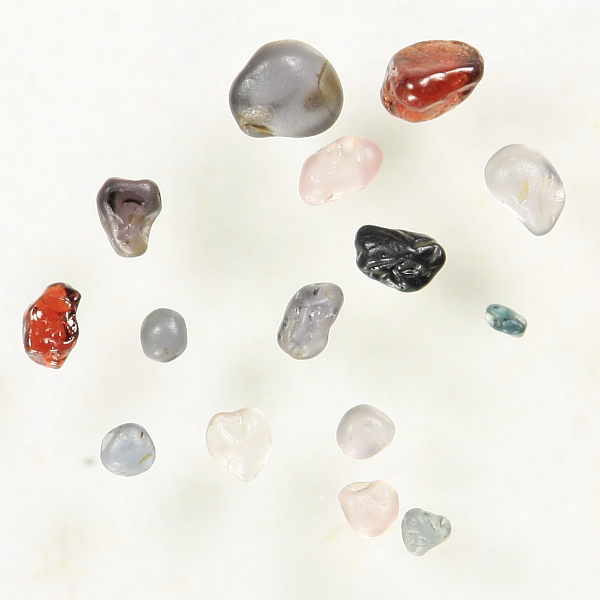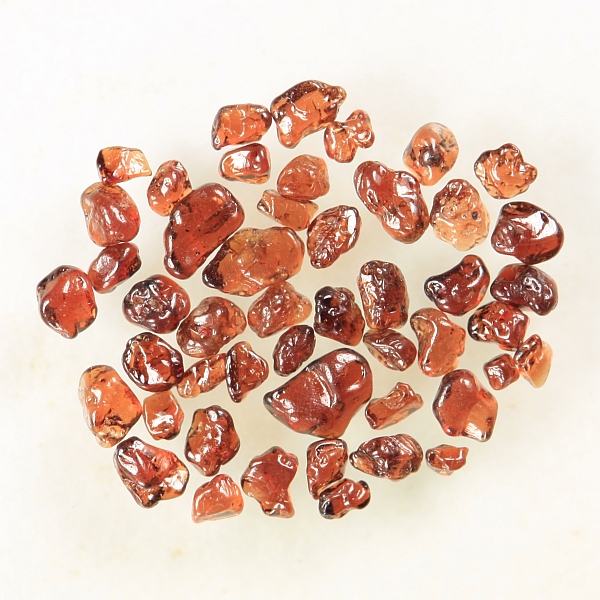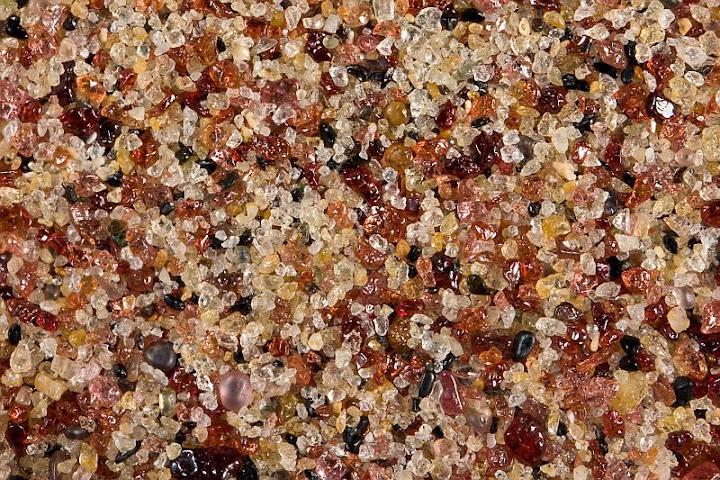Spinel is both a mineral and a mineral group. As a mineral it has the following chemical composition: MgAl2O4. As a mineral group it shares the same structure but varies in chemical composition. Even magnetite (Fe2+Fe3+2O4) and chromite (Fe2+Cr2O4) belong to this group.

Grains picked from a beach sand sample collected in Hambantota, Sri Lanka. The width of the view is 10 mm.
The group is divided into three series: spinel series (trivalent ion is aluminum), magnetite series (trivalent ion is iron), and chromite (trivalent ion is chromium) series.
Spinel series contains several end-member minerals of which spinel (sensu stricto) is the most common. Natural crystals are usually not pure endmembers. There are extensive replacements between different metal ions taking place which means that the minerals of the group are mostly solid solutions and that is the reason for such a variable color we encounter in the whole group, series, and the mineral itself.
The coloring agents of the series are Cr (red), Fe2+ (blue, green, black), Fe3+ (brown), Zn (bluish green), etc.
All minerals with spinel structure are optically isotropic and they have no cleavage. These are useful characteristics that help to identify the mineral. The mineral is often strongly colored. Red variety may be easily mistaken for garnet (both are isotropic as well) but spinel has usually deeper and darker red color. Grains in sand generally have matte surface with glossy patches.

Grains picked from a beach sand sample collected in Hambantota, Sri Lanka. Width of view 10 mm.
Spinel (sensu stricto) is mostly a metamorphic high-temperature mineral. It occurs in metamorphosed calcareous sediments (both regional and contact metamorphism) and argillaceous (rich in clay) high-temperature metasediments. It also occurs in igneous rocks and sometimes in hydrothermal veins too.
It is a physically hard mineral (harder than quartz) and is quite resistant to chemical weathering as well. Hence it is not uncommon in sand. Black minerals with matte surface and glossy patches are often spinel grains although their isotropism may be hard to determine because they are usually almost opaque. Tourmaline may be similar but is usually brownish, has often elongated and striated crystals, and has very strong pleochroism. It has no pleochroism and is always ‘extinct’ in crossed polarizers. You will need a polarizing microscope to test these properties (isotropism and pleochroism).

Heavy mineral sand from Sri Lanka which contains lots of intensely colored spinel grains. Width of view 20 mm.
Actually, chrome spinel isn’t quite isotropic; it’s often a sort of coffee-brown under crossed polars. A colleague of mine, Nan Shostak at San Jose State University in San Jose, California, USA, looked at quite a lot of it for a paper on sand sampled from monitoring wells.
Andersen, D.W., Shostak, N.C., Locke, K.M., Ramstetter, N.P., and Metzger, E.P., in
press, Composition and provenance of Quaternary sediment in the Santa Clara
Valley, California, in Williams, R.A., and Hanson, R.T., eds, Geology, geophysics,
and hydrology of the Santa Clara Valley, California: Geological Society of America
Special Paper.
Interesting. Minerals are often colored in crossed polars, especially red chromium bearing spinel. That doesn’t mean they are not isotropic. But maybe there are some other reasons which I am not aware of.